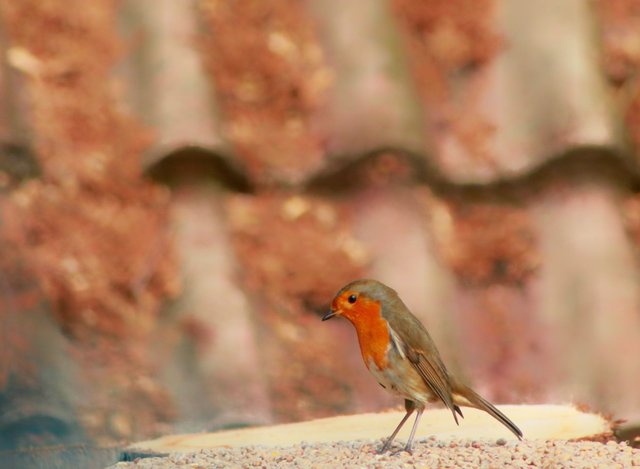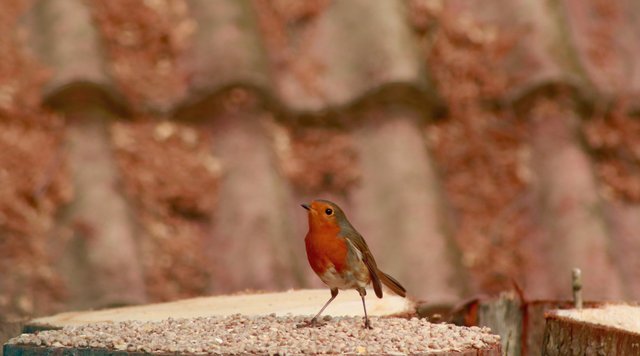
Just as a normal morning for me, having my coffee in my backyard this Robin decided to come around and pose for a couple of photos.
The European robin is perhaps the best known of all British birds. It is a common visitor to gardens and once attracted to food put out on a bird table, it will return to it all winter through.
Every continent has its own robins, but only the Japanese and Ryukyu robins are closely related.
Features of the robin include its distinctive red breast and face, grey under parts, brown head, wings and tail. Their flight is distinguishable by rapid wing beats for short, fast flight.
The best way to see a robin in your garden is to dig. Within minutes one may perch on a fence or branch nearby waiting to inspect the newly-turned soil for earthworms.
The robin has a distinctive and beautiful sounding call. It will sing to proclaim territory and attract a mate and usually sings all year round, although it is quieter in late summer when it moults.
Nearly three quarters of robins in Britain die before they are one year old, either caught by predators or unable to fend for themselves. Ten per cent of older robins die defending their territory.
Robins are fiercely territorial over food supply. Not more than one robin will occupy a small garden, unless it is his mate. When their food source becomes scarce in winter they will eat just about anything put out for them on a bird table, especially fatty foods such as bacon rind and cheese.
In winter, the robin puffs up its plumage to insulate its body against cold winds.
When the male robin has found a mate, he will strengthen their bond by bringing the female food, such as worms and caterpillars, which she begs for noisily while quivering her wings and is often mistaken by the observer to be the mother feeding the young.
Once the female has laid her eggs, she stays in the nest for up to two weeks, crouching low over them, well concealed with only her brown back visible. The male brings her food, sometimes as often as three times in an hour.
Both parents take responsibility when feeding and looking after their chicks until they are two weeks old when they can fly and become fully independent. They pair up for the breeding season (April to June) only.
Birds which raise an early brood are more likely to have a second or third brood in the same year. The female will sit on the clutch of 5-7 eggs while the male continues to feed and look after the year’s first fledglings.
Did you know that postmen used to be called robins because of their red tunics and the reason the robin is associated with Christmas cards is because these were delivered by the red-coated postmen ‘robins’?
The British affection for the robin, where-by they are known to be friendly and sociable birds with gardeners’ is not shared elsewhere in Europe, where they are shot for food or for sport.

Hi! I am a robot. I just upvoted you! I found similar content that readers might be interested in:
https://onekindplanet.org/animal/robin-european/
Downvoting a post can decrease pending rewards and make it less visible. Common reasons:
Submit